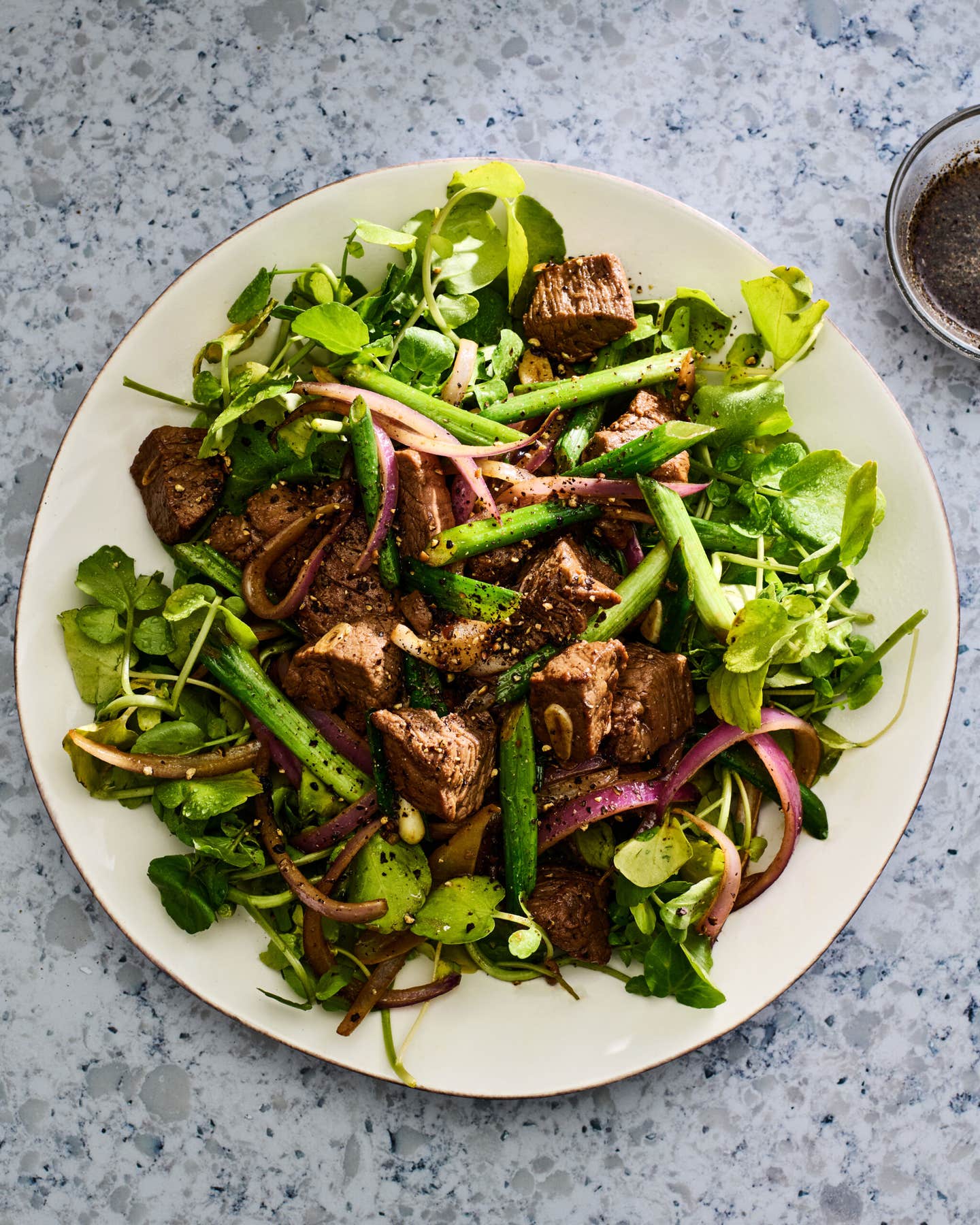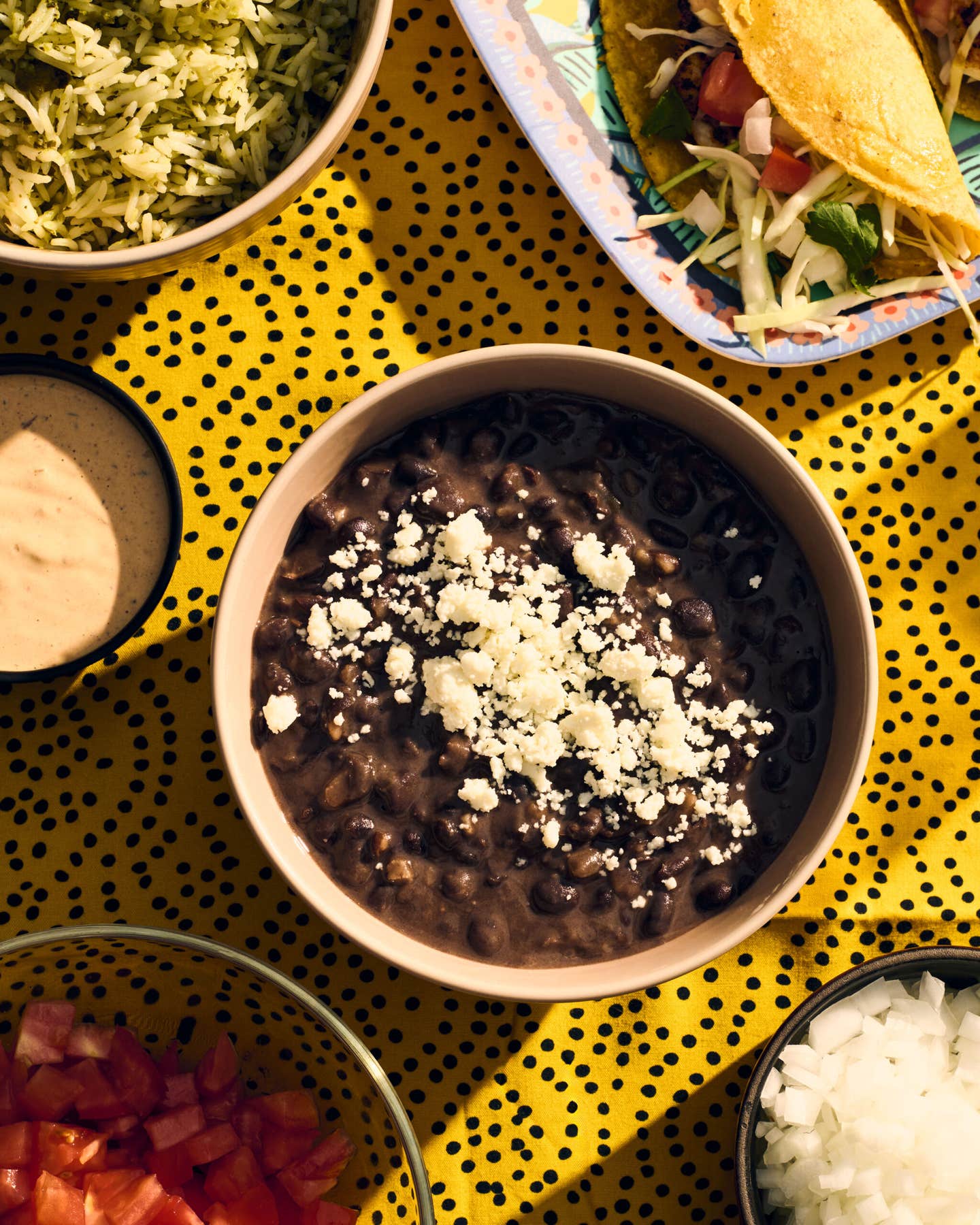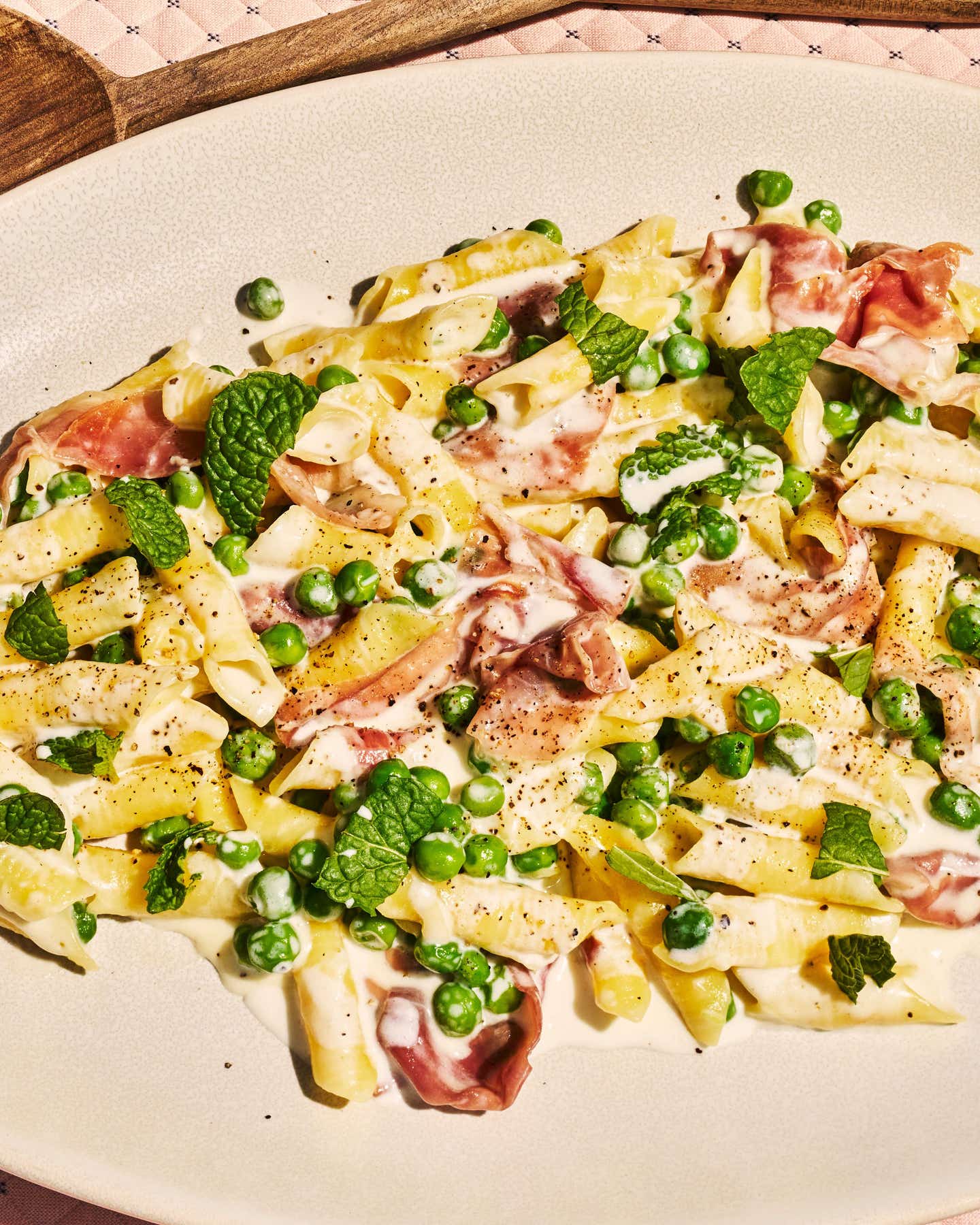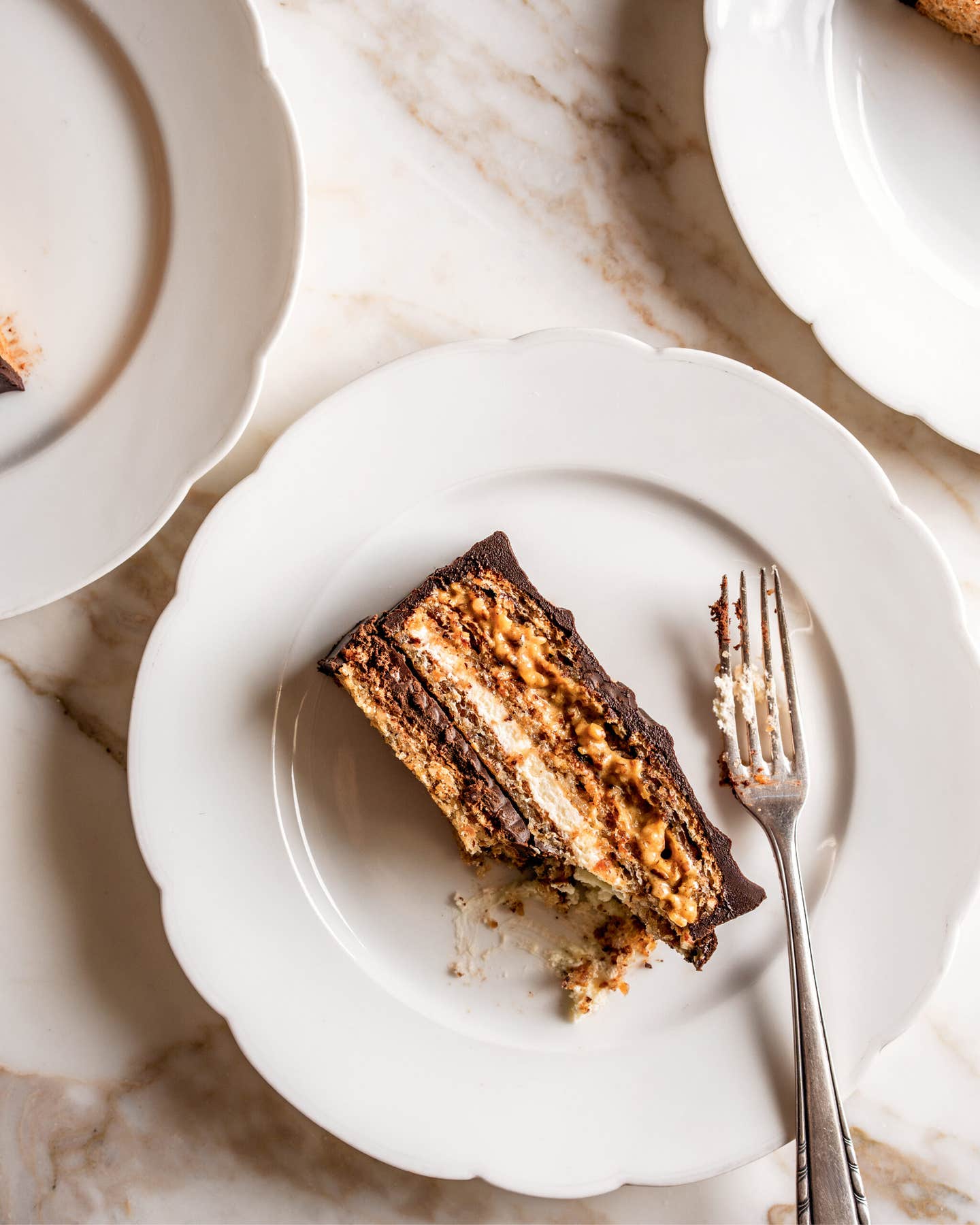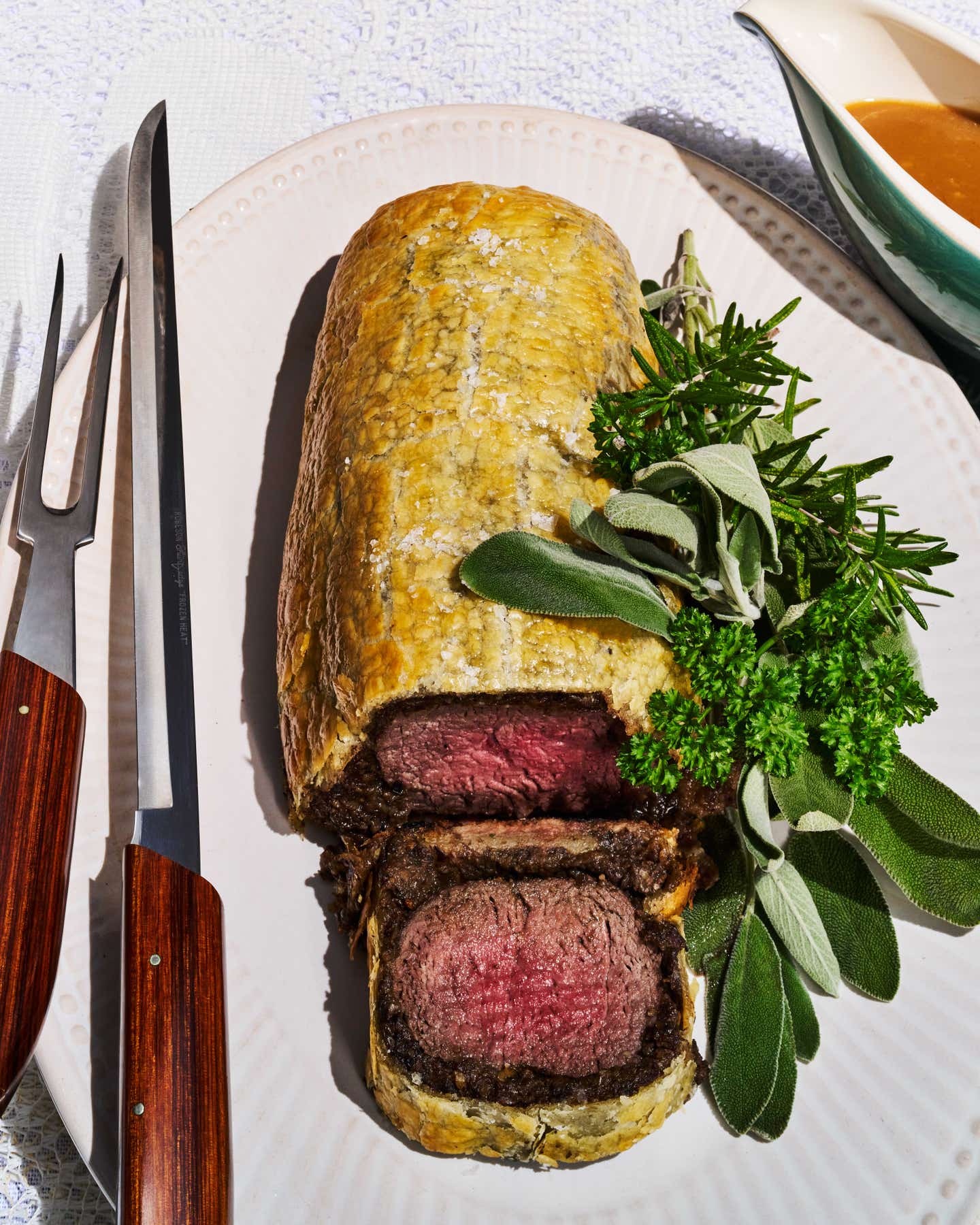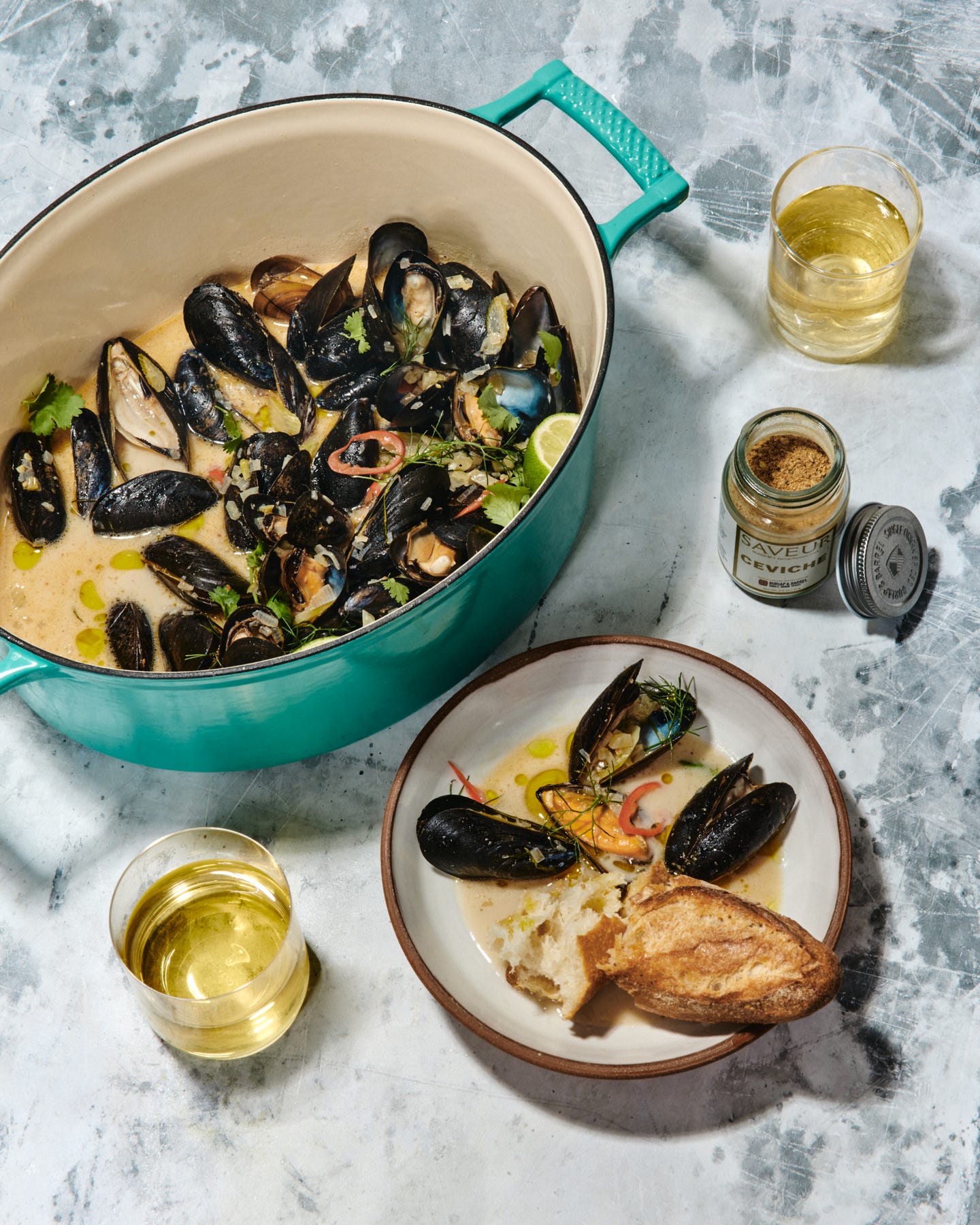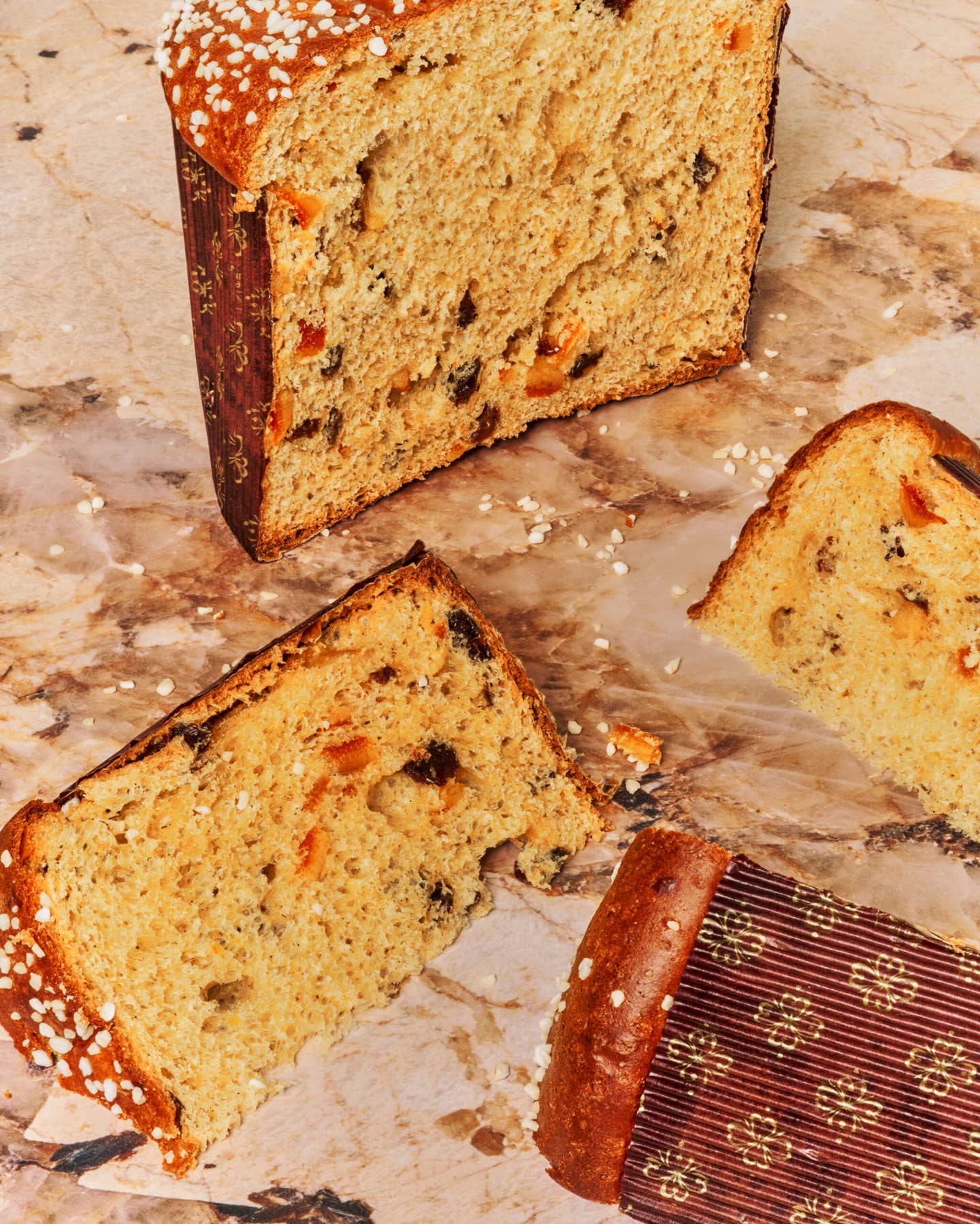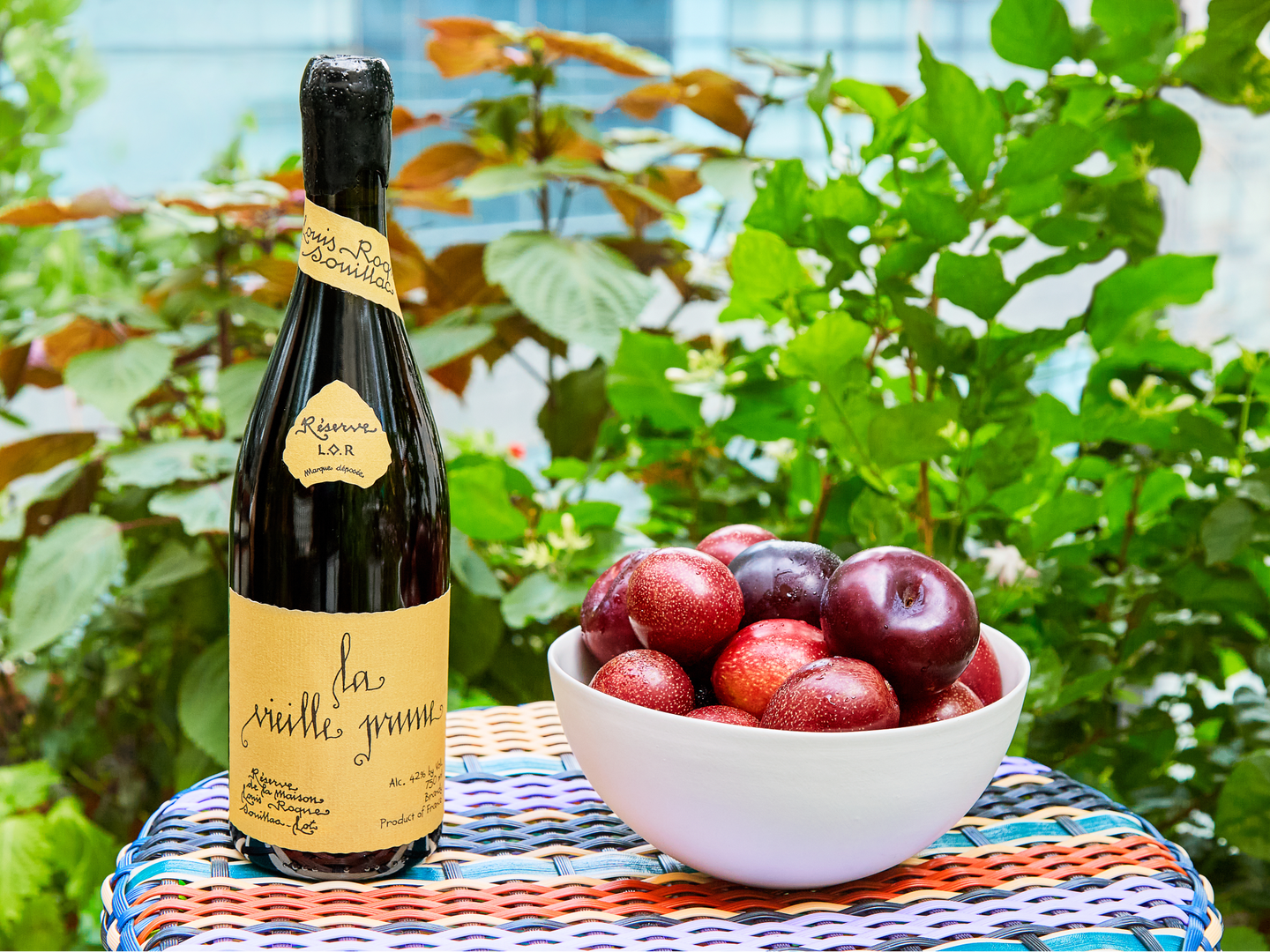
Plum Flambée Is a Fragrant, Fleshy Ode to Eau-de-Vie
Light up the night with this simple summer dessert.
Some of the world’s greatest dishes demand a nip of wine or spirits to reach their full potential. Welcome to Splash in the Pan, where writer and drinks expert Tammie Teclemariam teaches you how to bring them to life.
Even at peak season farmers markets, fruit isn’t always perfectly ready-to-eat. Case in point: plums, which appear at the end of every summer in a spectrum of yellow, red, and purple fruits from walnut- to apple-size. The best plums for cooking and baking are dark and small, and since they hold a lot of their flavor in the skin, they benefit from a little coaxing with heat and sugar. But instead of turning on the oven to bake, I reach for some eau-de-vie and flambé away.
Eau-de-vie (unaged fruit brandy) is one of my favorite things to drink (and cook with) for the way it captures the full fleshy fragrance of the fruit. The most popular ones are made from pears, apricots, cherries (known as “kirschwasser” in Germany), and plums (aka “slivovitz” in Eastern Europe). Because it takes a lot of fruit to make a single bottle of eau-de-vie, it can be pricey depending on the source. There are some extremely fancy brandies out there, as well as a lot of more approachable ones, often available in half-bottles for between $20 and $30 from producers like Trimbach in France and St. George in California.
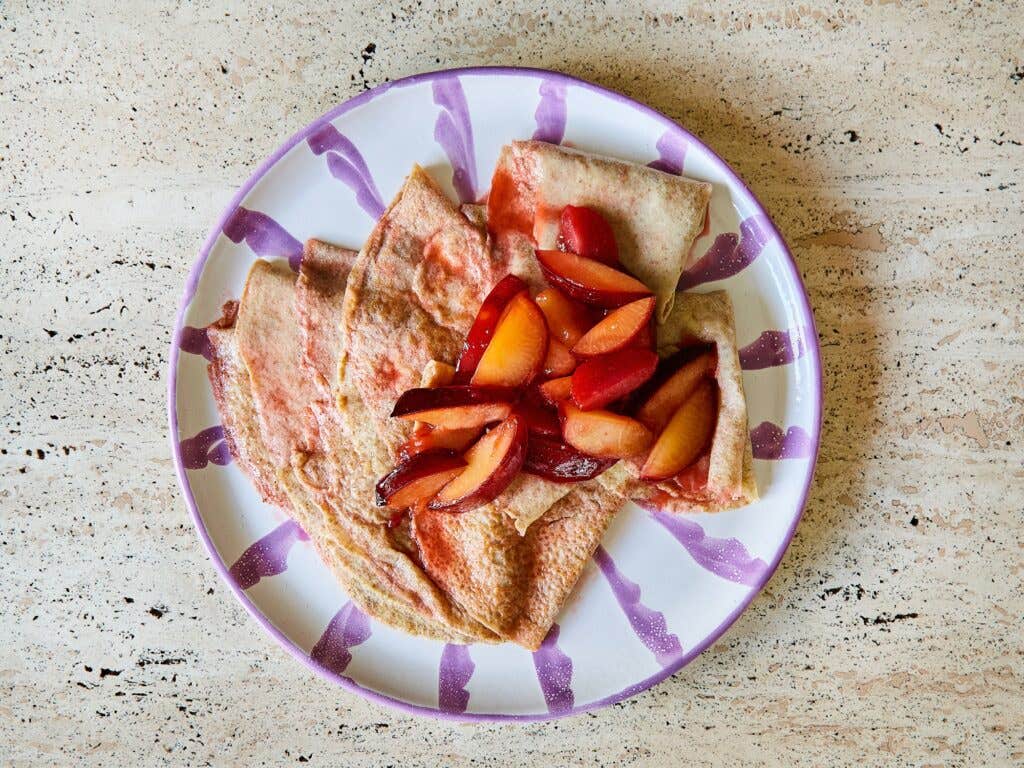
You can flambé plums with any stone fruit brandy you might already have on hand, but I love matching fruit with a kindred spirit whenever possible. I use a plum brandy called La Vieille Prune—which hails from Gascony, France, a region best known for Armagnac—which undergoes a bit of time in barrel (versus most plum brandy on the market being unaged).
I start by making a caramel, which adds a richness that matches the dark fruit flavor. Next, I cook the plums until soft and add lemon juice to correct the acidity before I flambée. I pour a couple of shots of brandy into a measuring cup or empty saucepan (never pour spirits directly from a bottle into a pan, as they can ignite) and then carefully add the liquid to the hot pan. You can ignite the alcohol fumes by tipping the pan toward the flame of your stove, but the safest way is to use a long lighter so you can stand as far back as possible.
Flambée is pretty underrated in my opinion. There’s nothing like a little bit of controlled fire in your food. Not only is it fun to watch things burn, it also lets you know that the bulk of your alcohol has burned off, an important step to keep your dish from having an unbalanced boozy heat.
Once the saucy plums have stopped flaming, they’re ready to serve. You can have them with ice cream or custard, but I take a page from another flaming dish, crêpes suzette, by serving dark rye crepes dipped in the caramelized sauce and topped with plums.
Keep Reading
Continue to Next Story
